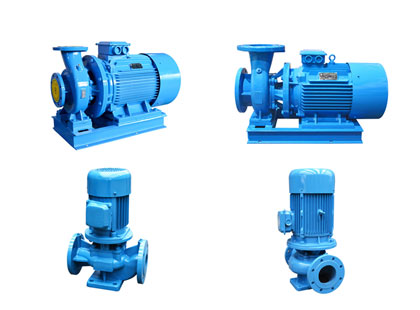Centrifugal pump refers to the centrifugal force produced when the impeller rotates to transport the liquid pump. Centrifugal pump is the use of impeller rotation and make the water centrifugal movement to work. Before the pump starts, the pump shell and the suction tube must be filled with water, and then start the motor, so that the pump shaft drives the impeller and the water to do high speed rotating motion, water centrifugal motion, is thrown to the outer edge of the impeller, through the flow channel of the cochlear pump shell into the water pump pressure pipe.
We should not only know what is centrifugal pump, but also pay attention to the main points when choosing products. In this article, Inverter.com will show you the steps to choose a centrifugal pump.

- Determine the physical and chemical properties of the liquid being transported. The physical and chemical properties of the liquid include temperature, viscosity, density, saturated vapor pressure, corrosiveness and toxicity, etc, whether it contains solid particles or bubbles. Only then can the type and model of the pump be determined, the material of the pump parts, the type of seals, and the measures to prevent pump corrosion and cavitation.
- Determine the flow rate of the pump. According to the requirements of production conditions, calculate the amount of liquid that needs to be transported per unit time, and add a certain margin (generally 5%-10%) as the flow rate of the centrifugal water pump.
- Calculate the lift of the pump. According to the flow rate of the pump and the condition of the pipeline and device, calculate the liquid resistance loss of the pipeline, find out the lift required by the pump, and add a certain margin (5%-10%) as the basis for selecting the pump. The rated flow generally adopts the maximum flow directly. If it is missing, it adopts 1.1-1.15 times of the normal flow. The rated lift is 1.05-1.1 times the lift required by the device. For media with viscosity greater than 20mm or containing solid particles, it needs to be converted into the rated flow and head when conveying clean water. According to the rated flow and head, find out the initially selected pump model, there may be several.
- Correction of viscous liquid. If the kinematic viscosity of the liquid to be transported is less than 20cSt (1cSt=1mm2/s), it is not necessary to correct it because the flow rate and lift of the pump do not change much. According to the flow rate and head of the pump and the physical and chemical properties of the liquid, a type of centrifugal pump is initially selected on the series diagram (spectrogram) of a certain type of pump.
- Determine the installation height of the pump. After the model of the centrifugal pump is determined, according to the local atmospheric pressure or the liquid surface pressure of the liquid to be conveyed, the temperature of the liquid and the saturated vapor pressure of the liquid at this temperature, the allowable vacuum height or allowable cavitation given on the centrifugal pump sample margin, determine the installation height of the pump.
- Determine the spare rate of the pump. When one pump can meet the production requirements, one pump should be used as far as possible, and the parallel operation of two or more pumps is generally less efficient, which is uneconomical from the point of view of "energy saving". However, when the flow rate is large, one pump cannot meet the production needs or a spare pump is required, two or more pumps can be used in parallel. When the starting current of the large pump is too large and has an impact on the power system, two smaller pumps are often used in parallel and started one by one.
